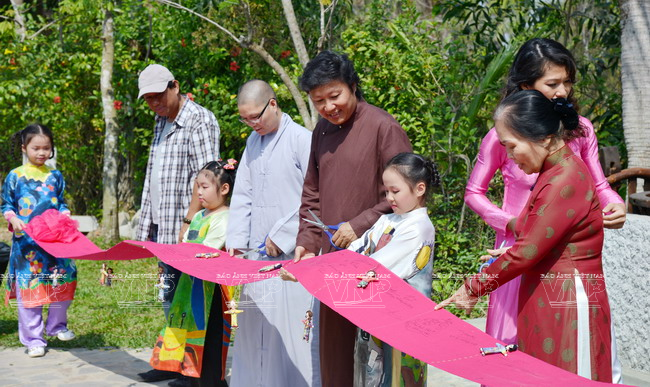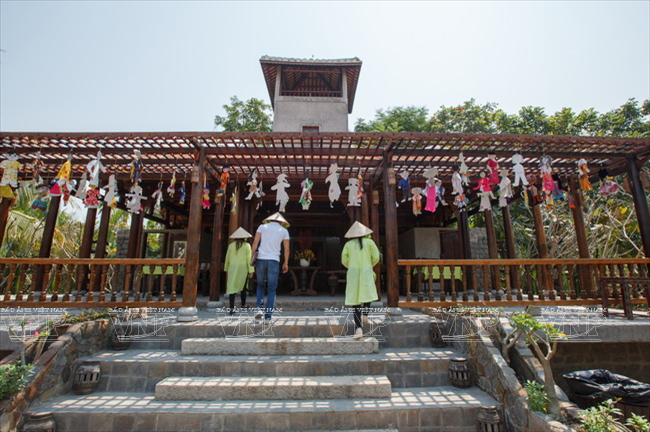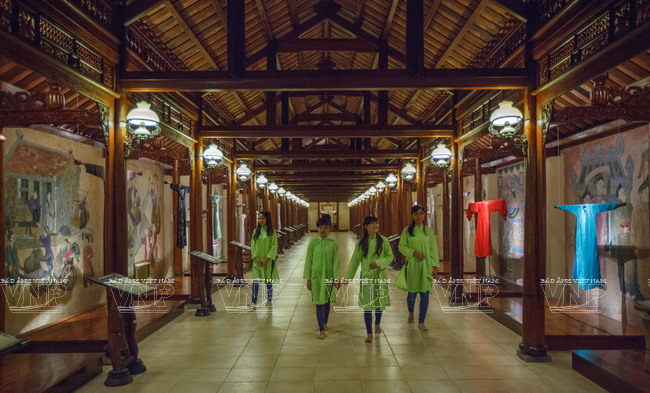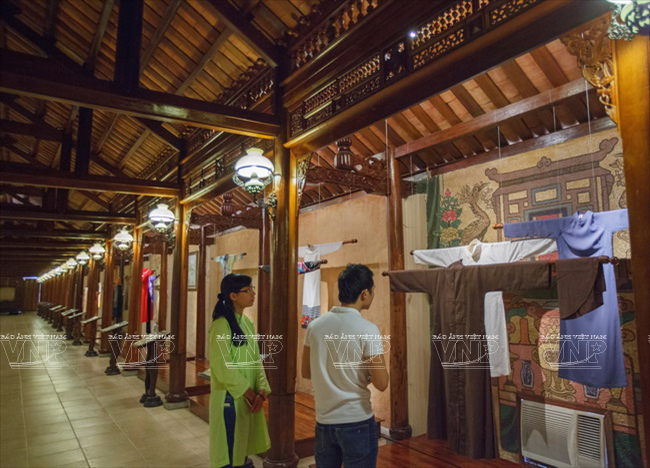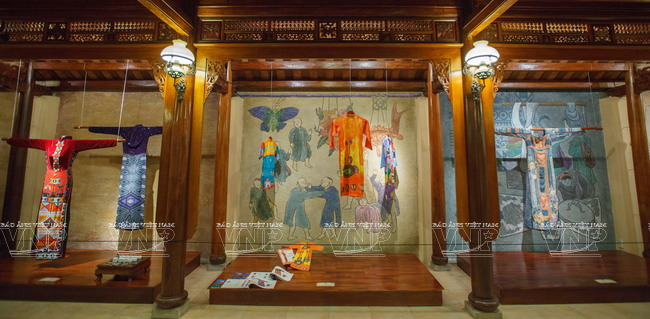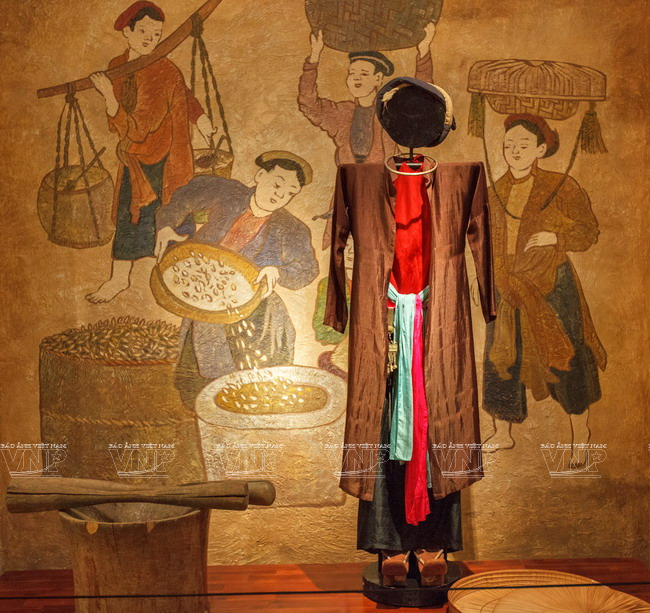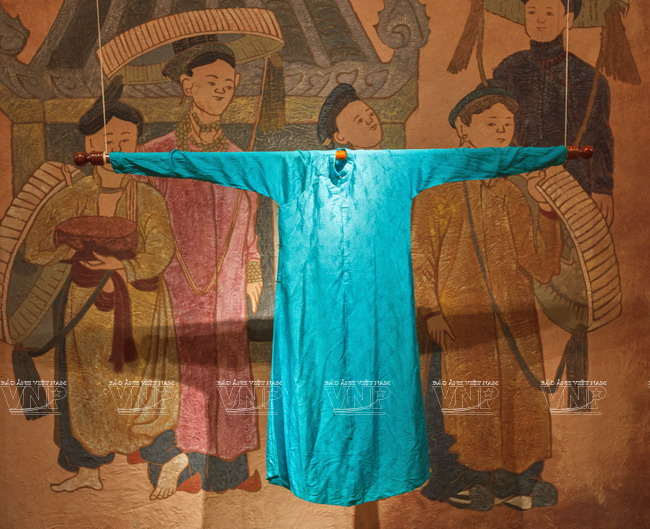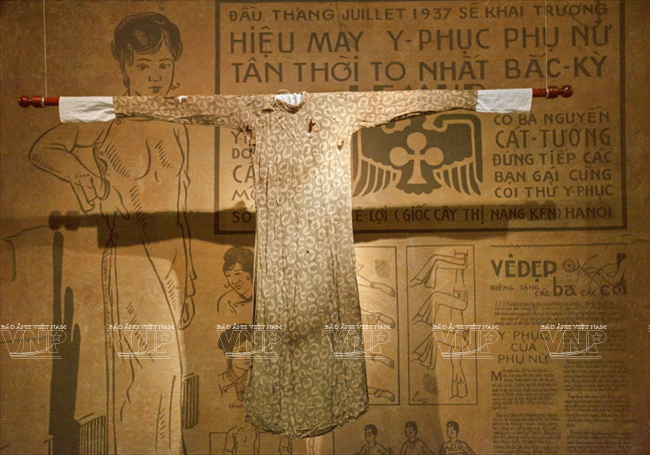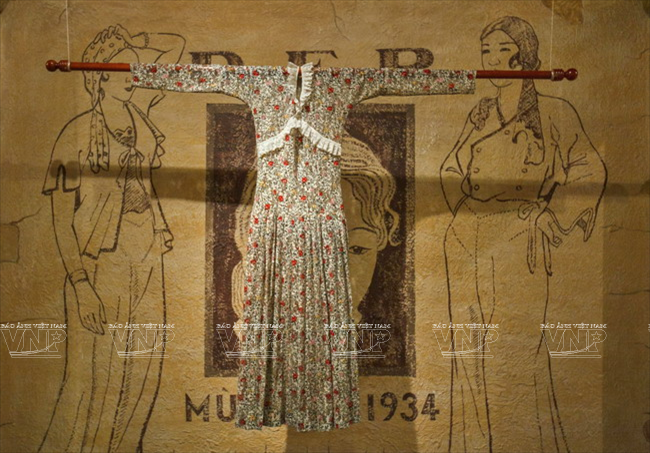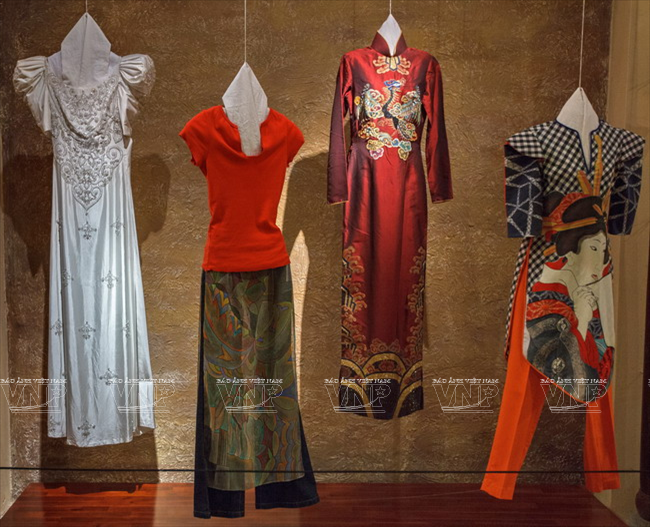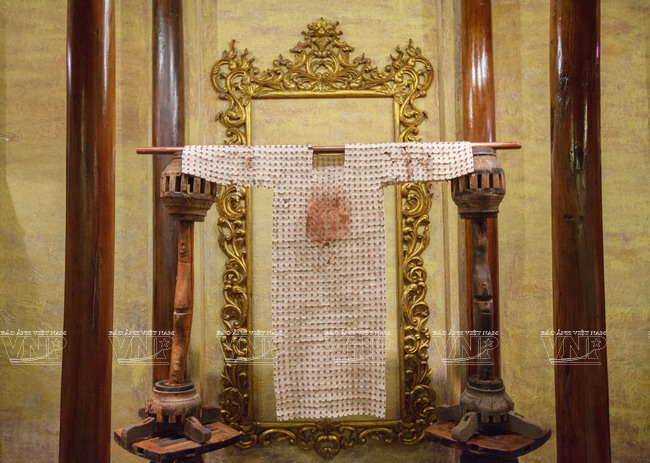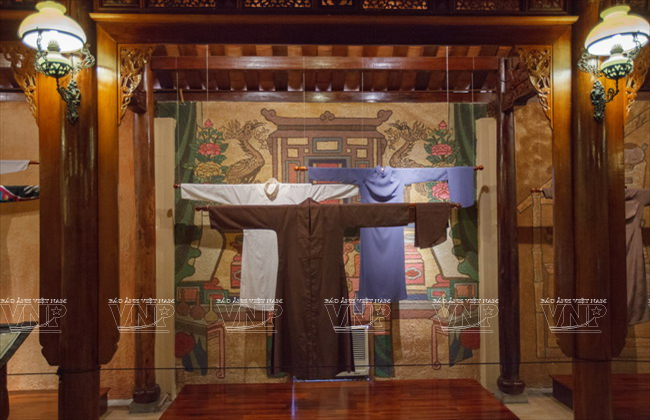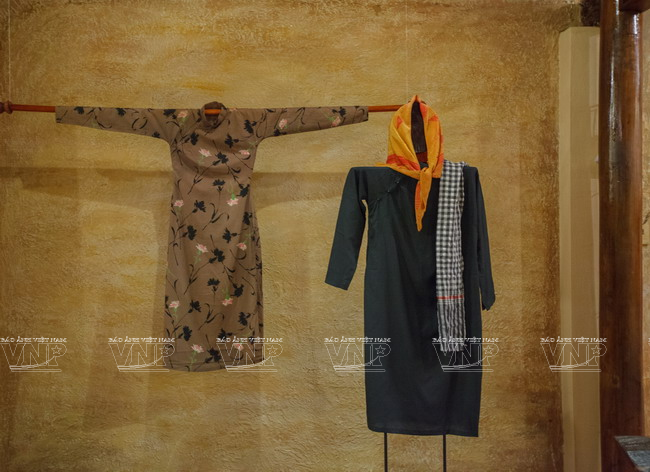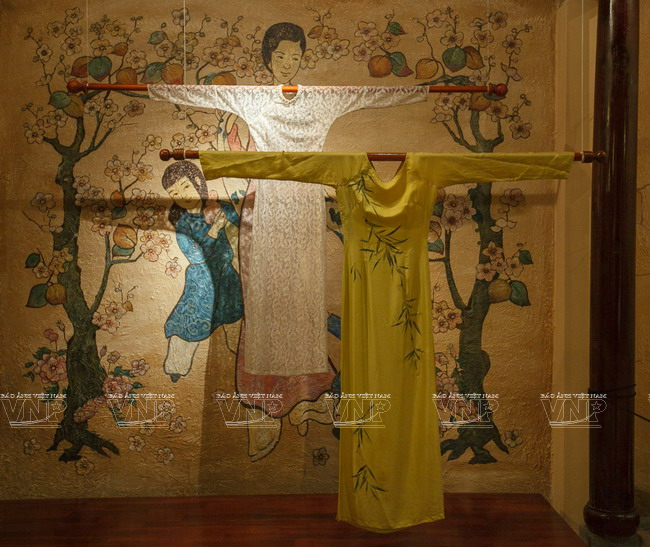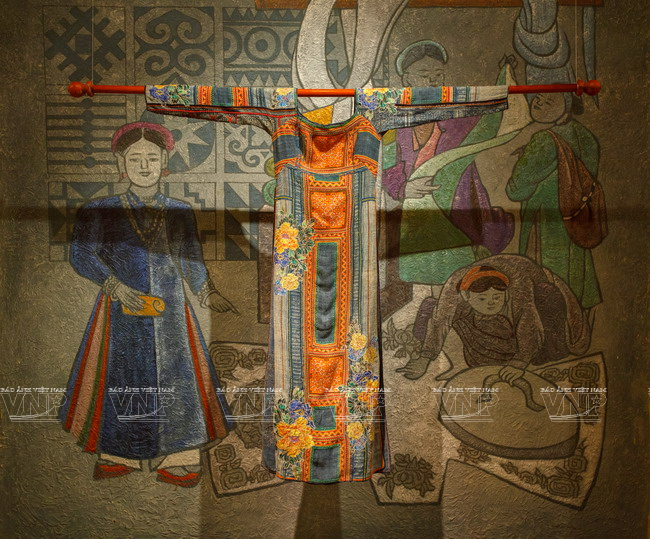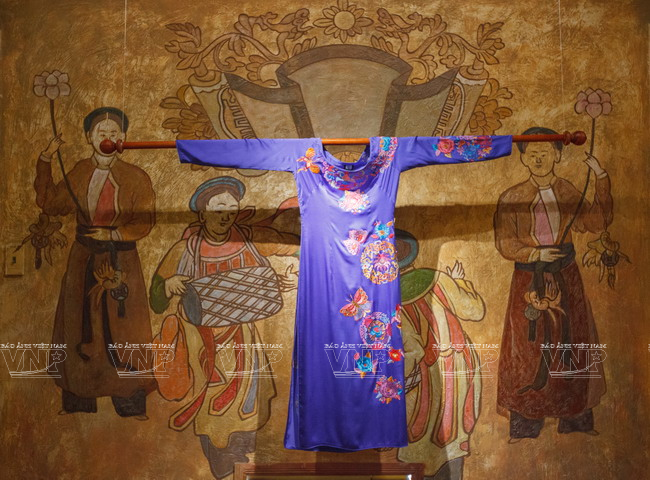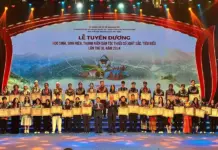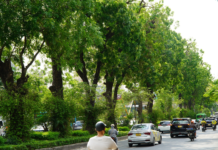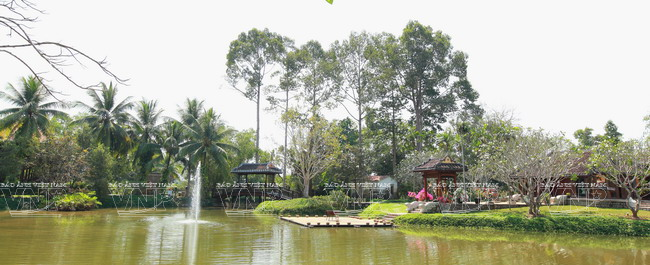 Part of Long Thuan garden house where designer Si Hoangbuilt the Ao dai Museum. Photo: Nguyen Luan/VNP |
The museum showcases Ao dai of different periods in the 17th and the 18th centuries, and more than 60 Ao dai owned by the Nguyen (1802-1945) kings and royal families, and dresses belonging to People’s Armed Forces Heroine Nguyen Thi Dinh, former Vice President Nguyen Thi Binh, former diplomat Ton Nu Thi Ninh and People’s Artists Tra Giang and Bach Tuyet. Stories about these Ao dai and their owners are also featured. It also displays Si Hoang’s collections which won important prizes at international contests and more than 3,000 photos of the tunic. The museum also offers exhibitions of music, literature, cinema and art, which were inspired by the traditional costume.
Re-creation of the entirely handmade process and embroidery of the “haute couture” Ao dai will also be a highlight.
Visiting the museum, visitors can view hundreds of Ao dai which relate to the country’s history, and learn about the complicated process of creating a dress. They also can select an Ao dai to try on and pose for a photo.
“The traditional attire shows both aesthetic and moral values. It helps the wearers look more graceful and have better behavior. This dress is admired by people in countries worldwide, whereas, this country does not have its own museum. Therefore, I hope that my museum will not only preserve the Vietnamese dress culture but also further promote it in the world,” shared designer Si Hoang.
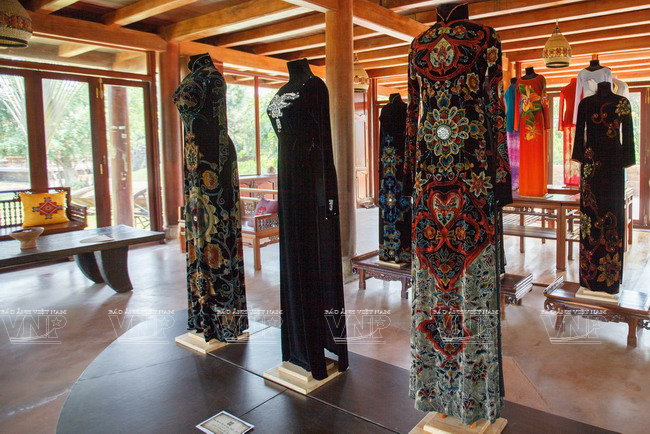 Some Ao dai designs bySi Hoang are also displayed atthe museum. Photo: Nguyen Luan/VNP |
Photos: Nguyen Luan & Files

